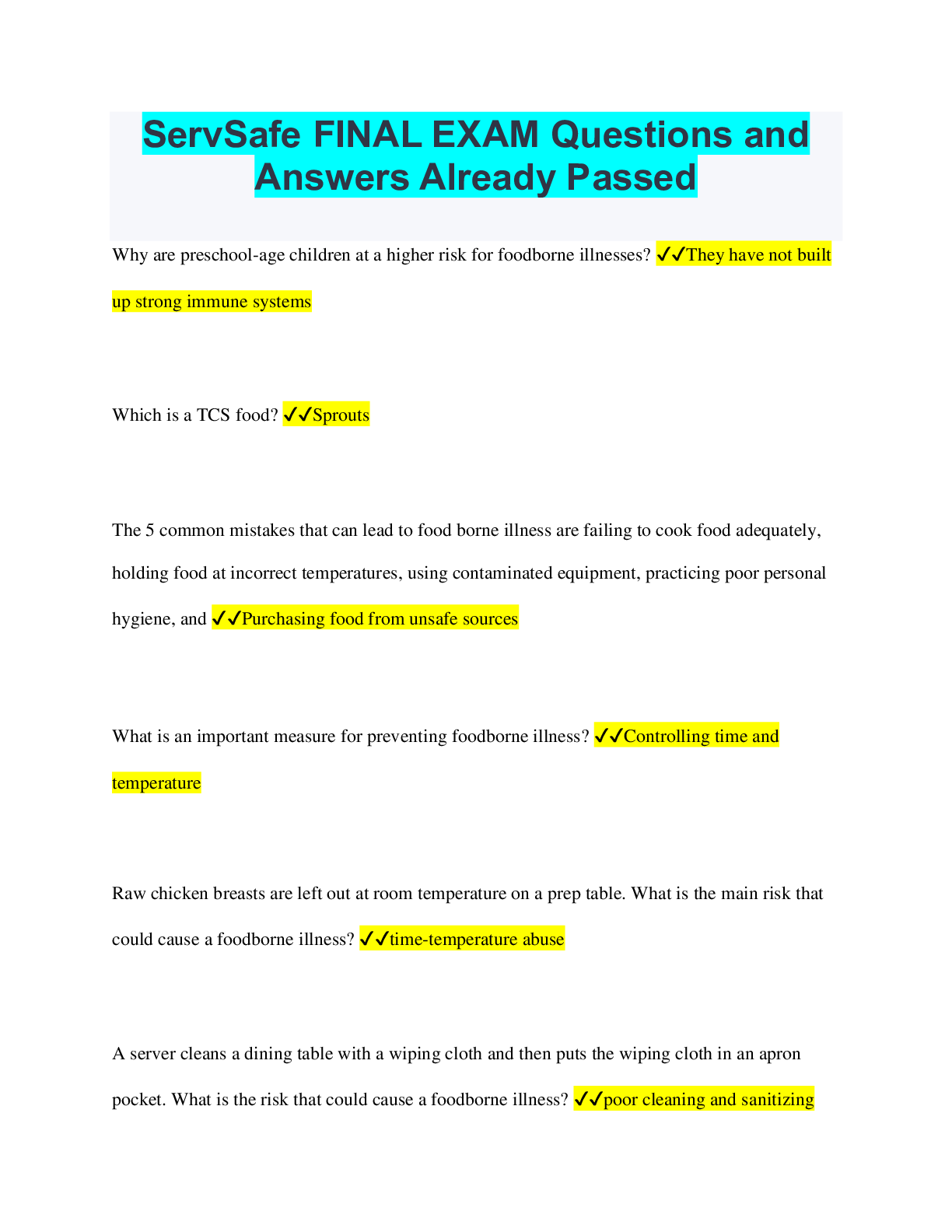Health Care > EXAM > NURSING NCLEX MODULE 8 EXAM QUESTIONS AND ANSWERS CARRINGTON COLLEGE RENO (All)
NURSING NCLEX MODULE 8 EXAM QUESTIONS AND ANSWERS CARRINGTON COLLEGE RENO
Document Content and Description Below
Questions 1.ID: 8482576270A nurse notes that the site of a client’s peripheral intravenous (IV) catheter is reddened, warm, painful, and slightly edematous near the insertion point of the cathete... r. On the basis of this assessment, the nurse first: Removes the IV catheter Correct Slows the rate of infusion Notifies the healthcare provider Checks for loose catheter connections Rationale: Phlebitis is an inflammatory process in the vein. Phlebitis at an IV site may be indicated by client discomfort at the site or by redness, warmth, and swelling in the area of the catheter. The IV catheter should be removed and a new IV line inserted at a different site. Slowing the rate of infusion and checking for loose catheter connections are not correct responses. The healthcare provider would be notified if phlebitis were to occur, but this is not the initial action. Test-Taking Strategy: Use the process of elimination, focusing on the data in the question. Eliminate slowing the rate of infusion and checking the connection, because they are comparable or alike in that they indicate continuation of IV therapy. Although the healthcare provider would be notified of this occurrence, the word “first” should direct you to select the option of removing the IV catheter. Review the signs of phlebitis and the actions to be taken when it occurs if you had difficulty with this question. Level of Cognitive Ability: Applying Client Needs: Physiological Integrity Integrated Process: Nursing Process/Implementation Content Area: Intravenous Therapy Reference: Ignatavicius, D., & Workman, M. (2010). Medical-surgical nursing: Patient-centered collaborative care (6th ed., p. 227). St. Louis: Saunders. Awarded 1.0 points out of 1.0 possible points. 2.ID: 8482578714A nurse hangs a 500-mL bag of intravenous (IV) fluid for an assigned client. One hour later the client complains of chest tightness, is dyspneic and apprehensive, and has an irregular pulse. The IV bag has 100 mL remaining. Which of the following actions should the nurse take first? Removing the IV Sitting the client up in bed Shutting off the IV infusion Correct Slowing the rate of infusion Rationale: The client’s symptoms are indicative of speed shock, which results from the rapid infusion of drugs or a bolus infusion. In this case, the nurse would note that 400 mL has infused over 60 minutes. The first action on the part of the nurse is shutting off the IV infusion. Other actions may follow in rapid sequence: The nurse may elevate the head of the bed to aid the client’s breathing and then immediately notify the healthcare provider. Slowing the infusion rate is inappropriate because the client will continue to receive fluid. The IV does not need to be removed. It may be needed to manage the complication. Test-Taking Strategy: Use the process of elimination, focusing on the data in the question. Note the question contains the strategic word “first.” Recognizing the signs of speed shock and recalling the appropriate interventions should also direct you to the option of shutting off the IV infusion. Review the initial nursing actions for speed shock if you had difficulty with this question. Level of Cognitive Ability: Applying Client Needs: Physiological Integrity Integrated Process: Nursing Process/Implementation Content Area: Intravenous Therapy Reference: Ignatavicius, D., & Workman, M. (2010). Medical-surgical nursing: Patient-centered collaborative care (6th ed., p. 230). St. Louis: Saunders. Awarded 1.0 points out of 1.0 possible points. 3.ID: 8482574309A nurse discontinues infusion of a unit of packed red blood cells (RBCs) because the client is experiencing a transfusion reaction. After discontinuing the transfusion, which of the following actions does the nurse take next? Removing the IV catheter Contacting the healthcare provider Correct Changing the solution to 5% dextrose in water Obtaining a culture of the tip of the catheter device removed from the client Rationale: If the nurse suspects a transfusion reaction, the transfusion is stopped and normal saline solution infused at a keep-vein-open rate pending further physician prescriptions. The nurse then contacts the physician. Dextrose in water is not used, because it may cause clotting or hemolysis of blood cells. Normal saline solution is the only type of IV fluid that is compatible with blood. The nurse would not remove the IV catheter, because then there would be no IV access route through which to treat the reaction. There is no reason to obtain a culture of the catheter tip; this is done when an infection is suspected. Test-Taking Strategy: Use the process of elimination, focusing on the strategic word “next.” Knowing that the IV should not be removed will assist you in the elimination process. Recalling that normal saline solution is the only type of IV fluid that is compatible with blood will also help you answer correctly. To select from the remaining options, note that infection is not the concern; this will help you eliminate the option of obtaining a culture of the catheter tip. Review care of the client experiencing a transfusion reaction if you had difficulty with this question. Level of Cognitive Ability: Applying Client Needs: Physiological Integrity Integrated Process: Nursing Process/Implementation Content Area: Blood administration Reference: Ignatavicius, D., & Workman, M. (2010). Medical-surgical nursing: Critical thinking for collaborative care (6th ed.). Philadelphia: W. B. Saunders, p. 919. Awarded 1.0 points out of 1.0 possible points. 4.ID: 8482578727A client with heart failure is being given furosemide (Lasix) and digoxin (Lanoxin). The client calls the nurse and complains of anorexia and nausea. Which action should the nurse take first? Administering an antiemetic Administering the daily dose of digoxin Discontinuing the morning dose of furosemide Checking the result of laboratory testing for potassium on the sample drawn 3 hours ago Correct Rationale: Anorexia and nausea are symptoms commonly associated with digoxin toxicity, which is compounded by hypokalemia. Early clinical manifestations of digoxin toxicity include anorexia and mild nausea, but they are frequently overlooked or not associated with digoxin toxicity. Hallucinations and any change in pulse rhythm, color vision, or behavior should be investigated and reported to the healthcare provider. The nurse should first check the results of the potassium level, which will provide additional when the nurse calls the physician, an important follow-up action. The nurse should also check the digoxin reading if one is available. The nurse would not administer an antiemetic without further investigating the client’s problem. Because digoxin toxicity is suspected, the nurse would withhold the digoxin until the physician has been consulted. The nurse would not discontinue a medication without a prescription to do so. Test-Taking Strategy: Note the strategic word “first” and use the steps of the nursing process to answer the question. The correct option is the only one that addresses assessment. Review nursing interventions for suspected digoxin toxicity if you had difficulty with this question. Level of Cognitive Ability: Applying Client Needs: Physiological Integrity Integrated Process: Nursing Process/Implementation Content Area: Pharmacology Reference: Hodgson, B., & Kizior, R. (2010). Saunders nursing drug handbook 2010 (p. 347). St. Louis: Saunders. Awarded 1.0 points out of 1.0 possible points. 5.ID: 8482576274A physician prescribes the administration of parenteral nutrition (PN), to be started at a rate of 50 mL/hr by way of infusion pump through an established subclavian central line. After the first 2 hours of the PN infusion, the client suddenly complains of difficulty breathing and chest pain. The nurse immediately: Obtains blood for culture Clamps the PN infusion line Correct Obtains a sample for blood glucose testing Obtains an electrocardiogram (ECG) Rationale: One complication of a subclavian central line is embolism, caused by air or thrombus. Sudden onset of chest pain shortly after the initiation of PN may mean that this complication has developed. The infusion is clamped (the line should not be discontinued, however), the client turned on the left side with the head down, and the physician notified immediately. Depending on agency protocol, the rapid response team would also be called. Blood cultures are not necessary in this situation, because infection is not the concern. Likewise, there is no useful reason for checking the blood glucose level. An ECG may be obtained, but this is not the immediate priority. If the client shows signs of an air embolism, the nurse should examine the catheter to determine whether an open port has allowed air into the circulatory system. Test-Taking Strategy: Note the words “after the first 2 hours” and “immediately.” Focus on the data provided in the question to determine that an embolus has occurred. Eliminate blood cultures and blood glucose testing, which, respectively, relate to infection and hyperglycemia, which is not likely to occur during the first 2 hours of PN administration. To select from the remaining options, focus on the strategic word “immediately”; this will direct you to the correct option. Review the complications of PN and the associated nursing interventions if you had difficulty with this question. Level of Cognitive Ability: Applying Client Needs: Physiological Integrity Integrated Process: Nursing Process/Implementation Content Area: Parenteral Nutrition Reference: Perry, A., & Potter, P. (2010). Clinical nursing skills & techniques (7th ed., p. 850). St. Louis: Mosby. Awarded 1.0 points out of 1.0 possible points. 6.ID: 8482574373A physician prescribes 2000 mL of 5% dextrose and normal saline 0.45% for infusion over 24 hours. The drop factor is 15 gtt/mL. At how many drops per minute does the nurse set the flow rate? (Round to the nearest whole number). 21CorrectCorrect Responses [Show More]
Last updated: 1 year ago
Preview 1 out of 66 pages
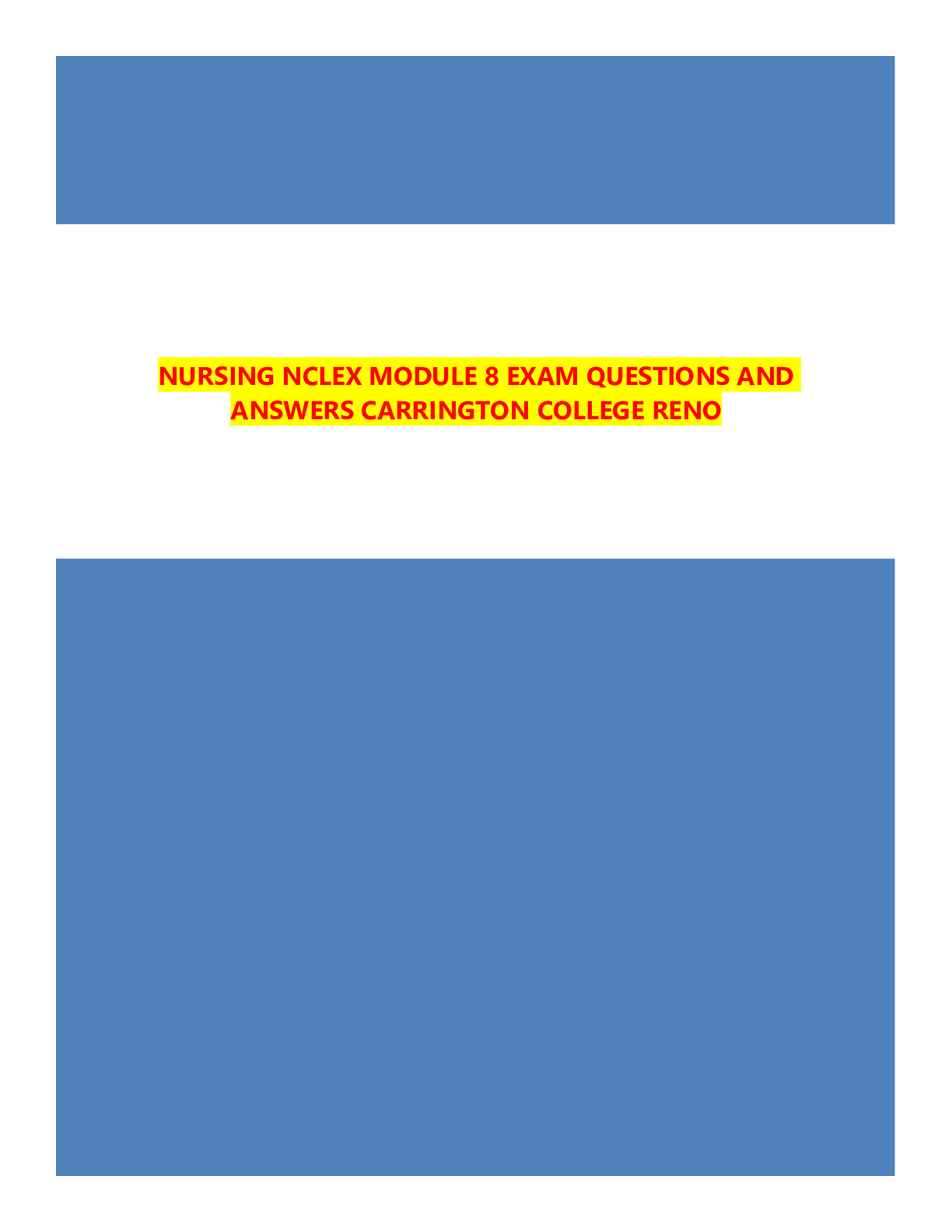
Also available in bundle (2)

NCLEX EXAM QUESTIONS AND ANSWERS 2023/2024
NCLEX EXAM QUESTIONS AND ANSWERS 2023/2024
By Tutor Charles 8 months ago
$150.5
24

NCLEX EXAM QUESTIONS AND ANSWERS 2023/2024
NCLEX EXAM QUESTIONS AND ANSWERS 2023/2024
By Tutor Charles 8 months ago
$150.5
27
Reviews( 0 )
Document information
Connected school, study & course
About the document
Uploaded On
Feb 04, 2023
Number of pages
66
Written in
Additional information
This document has been written for:
Uploaded
Feb 04, 2023
Downloads
0
Views
28

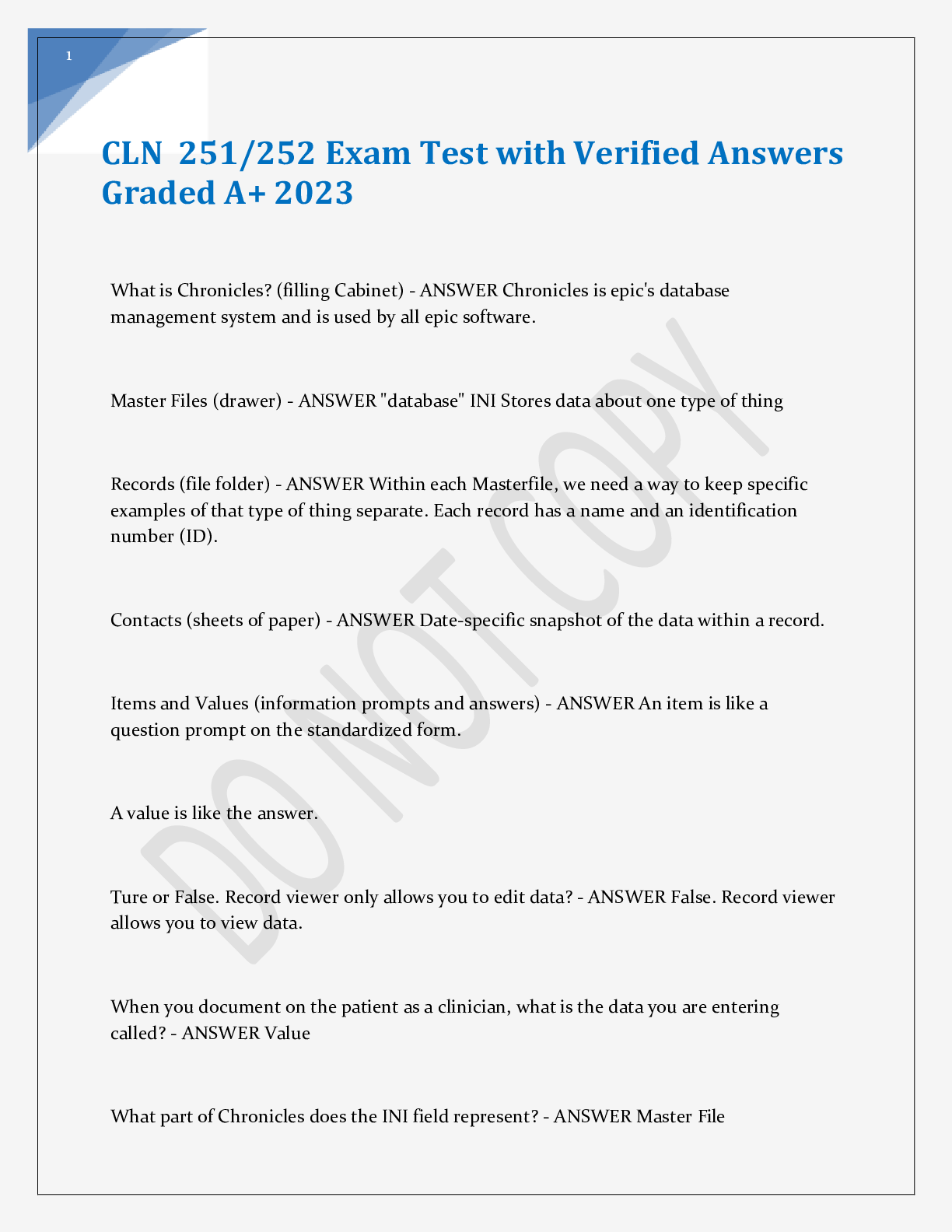
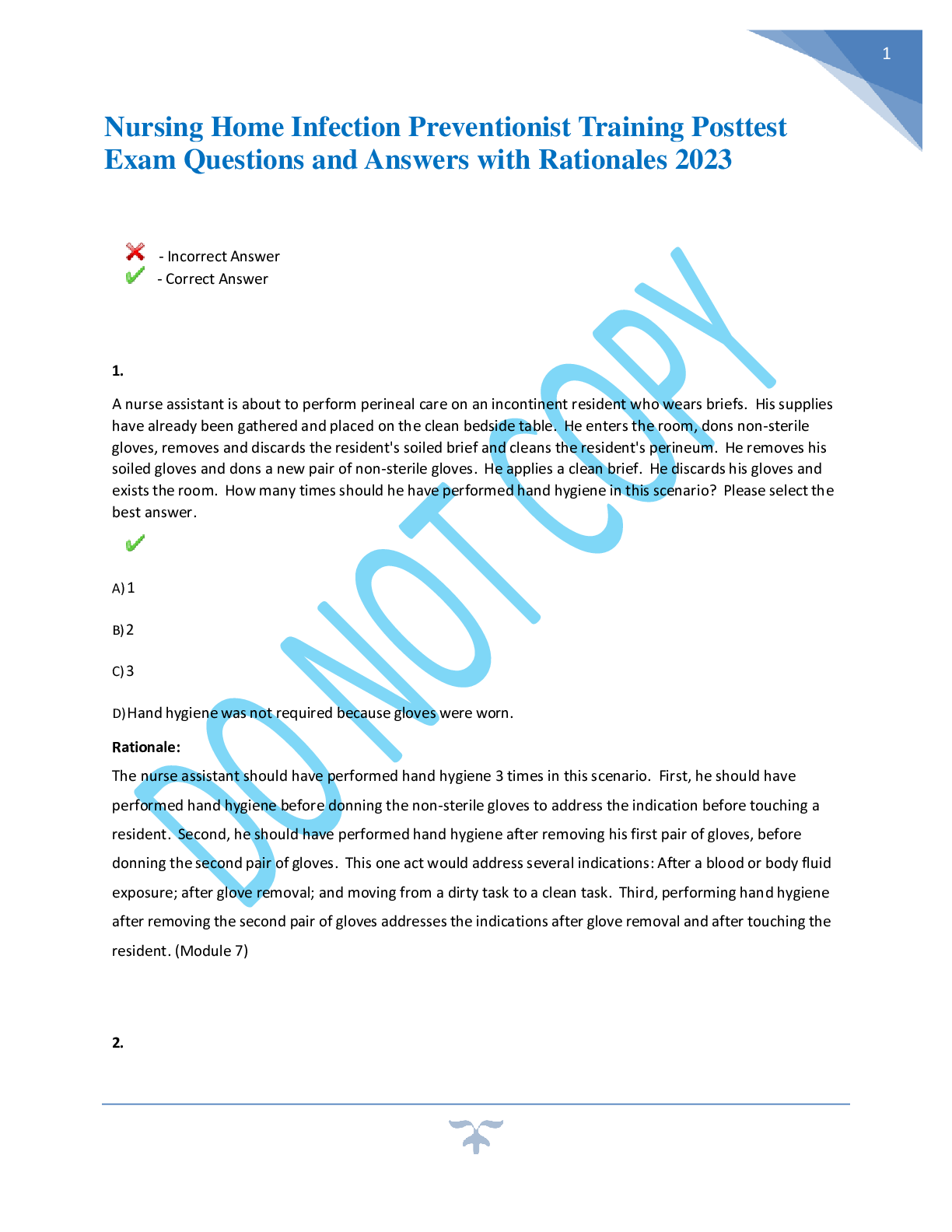
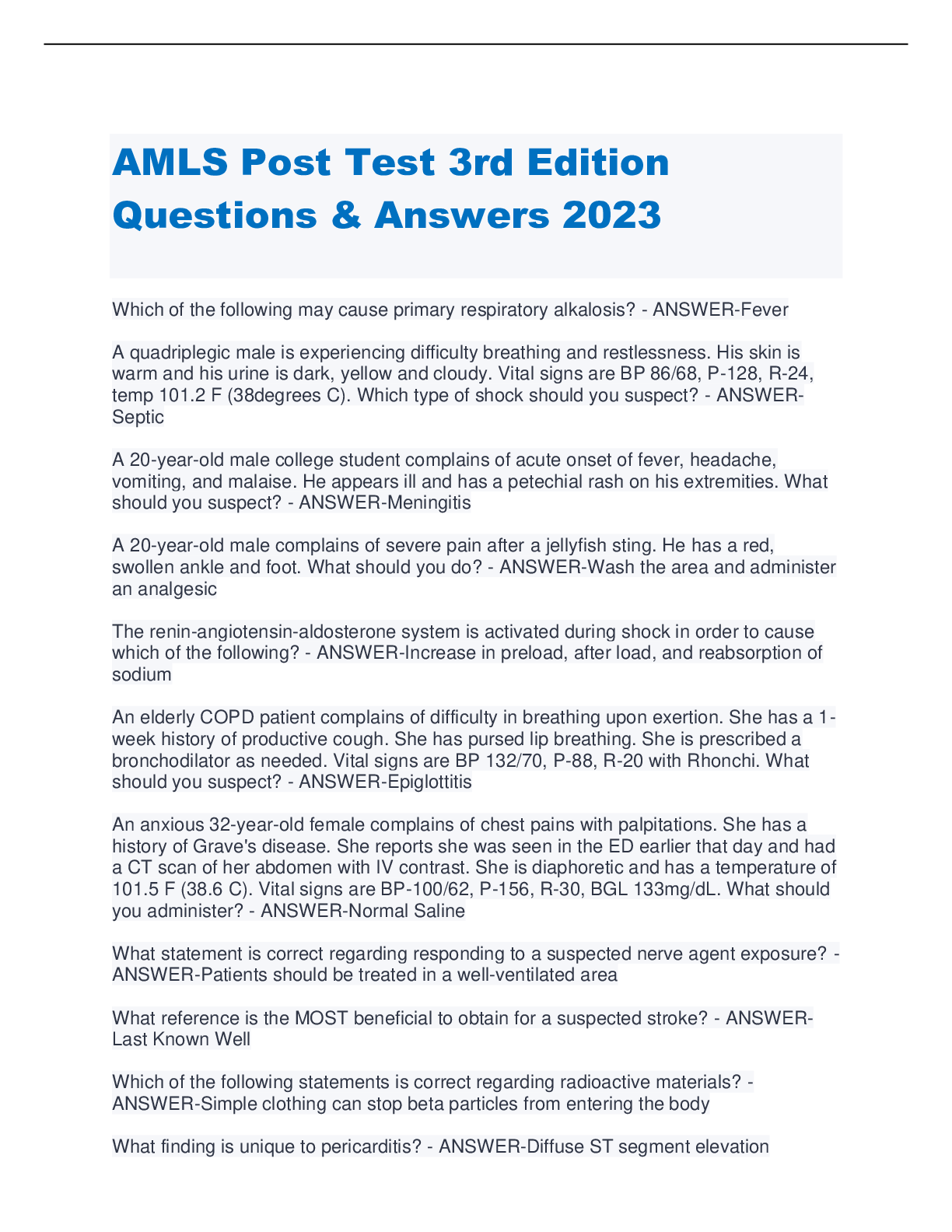
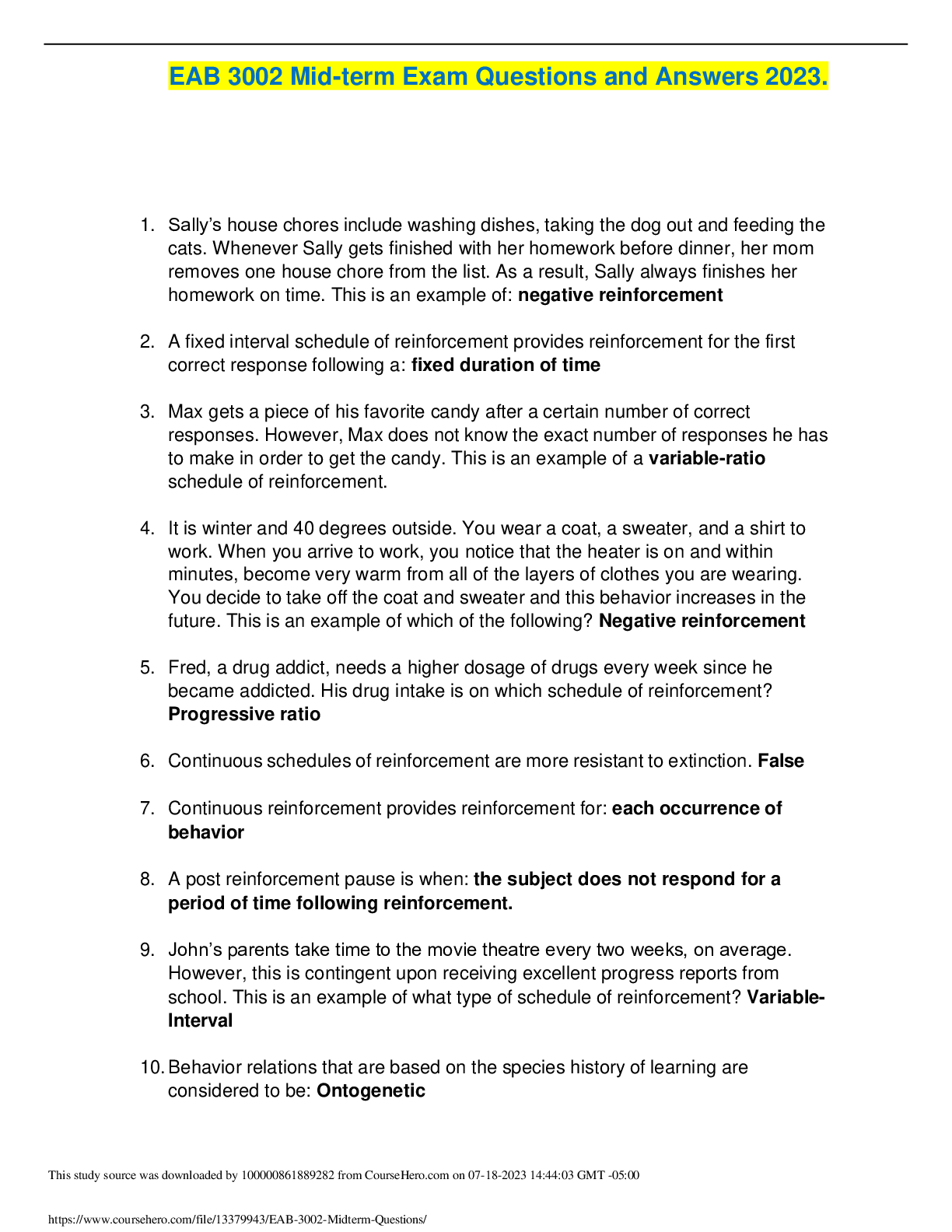

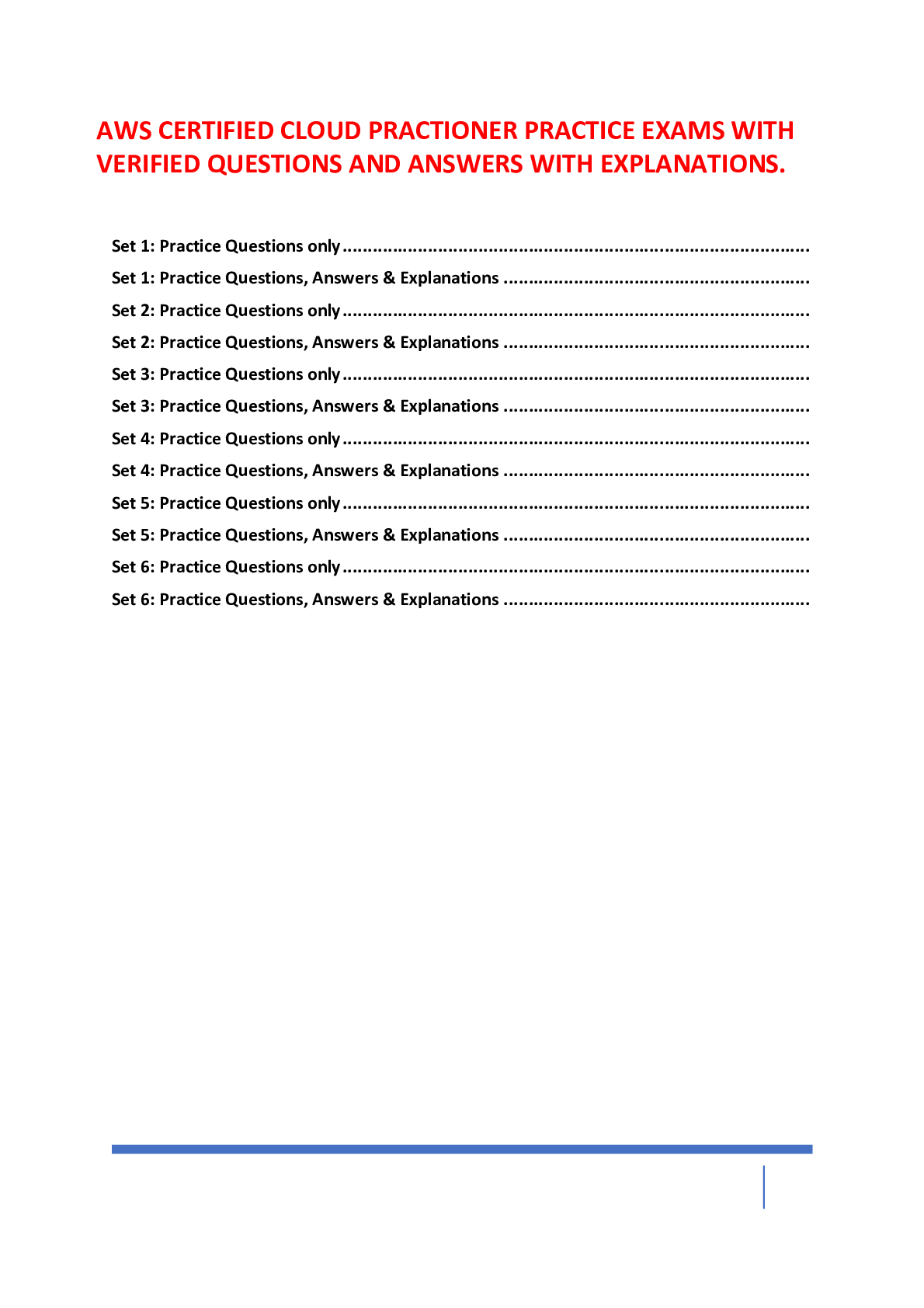
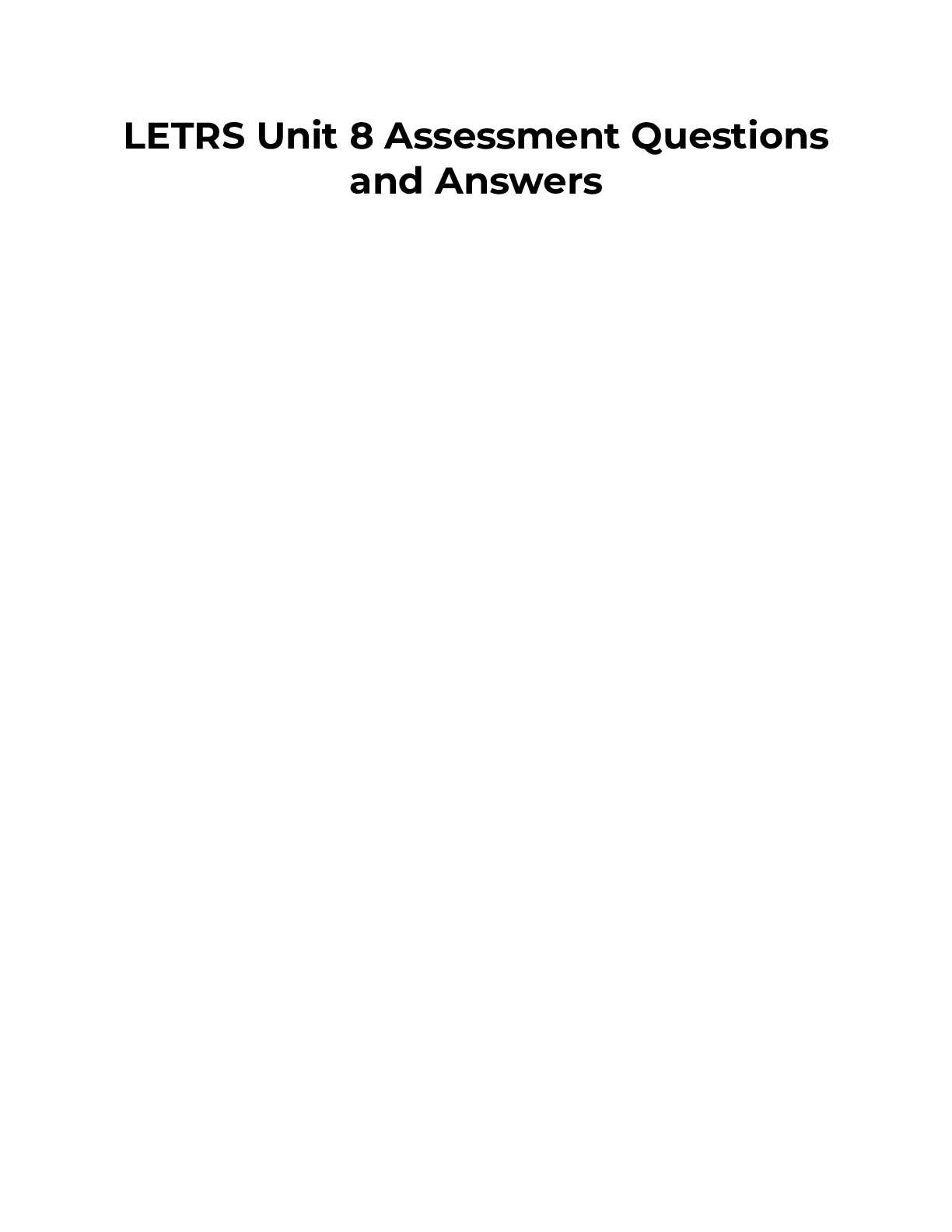

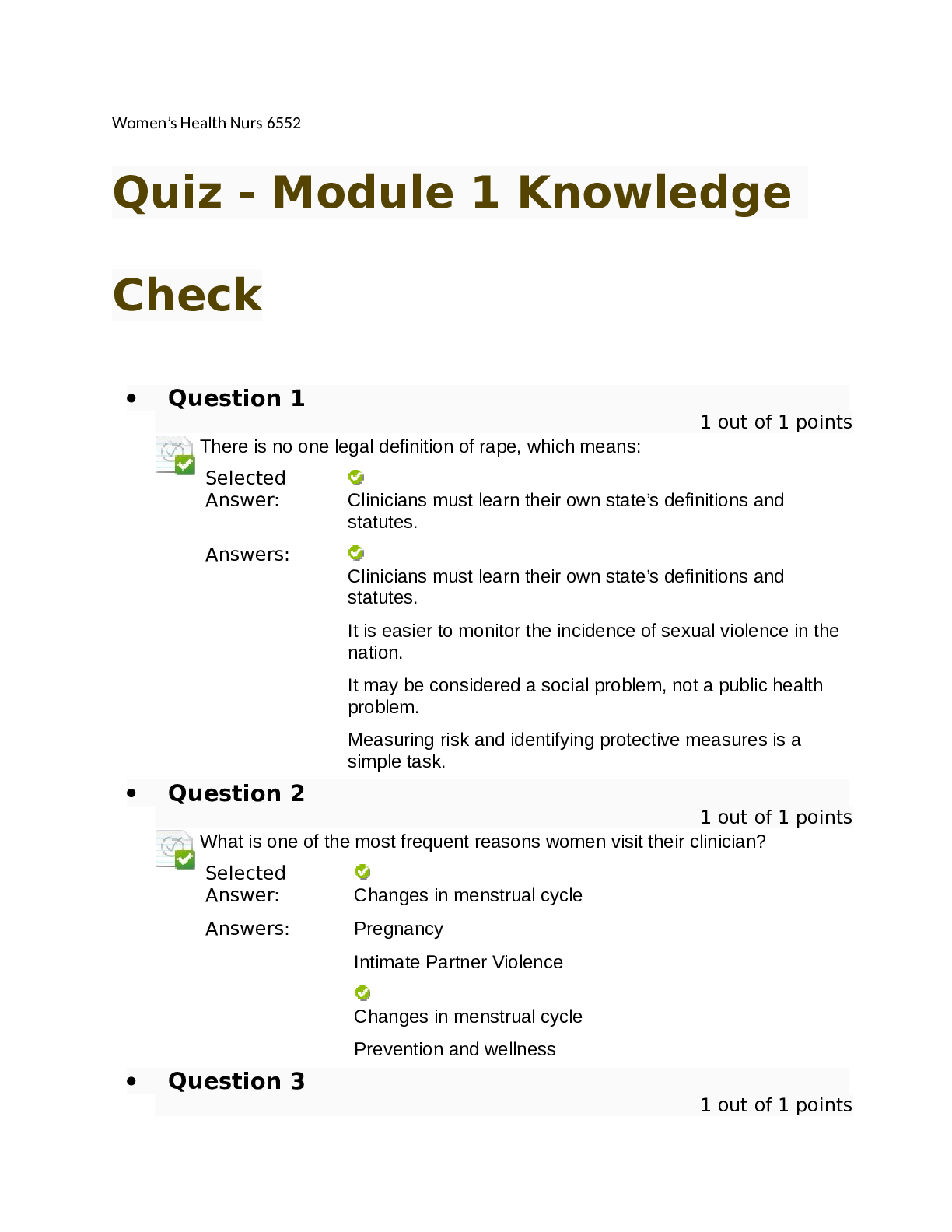






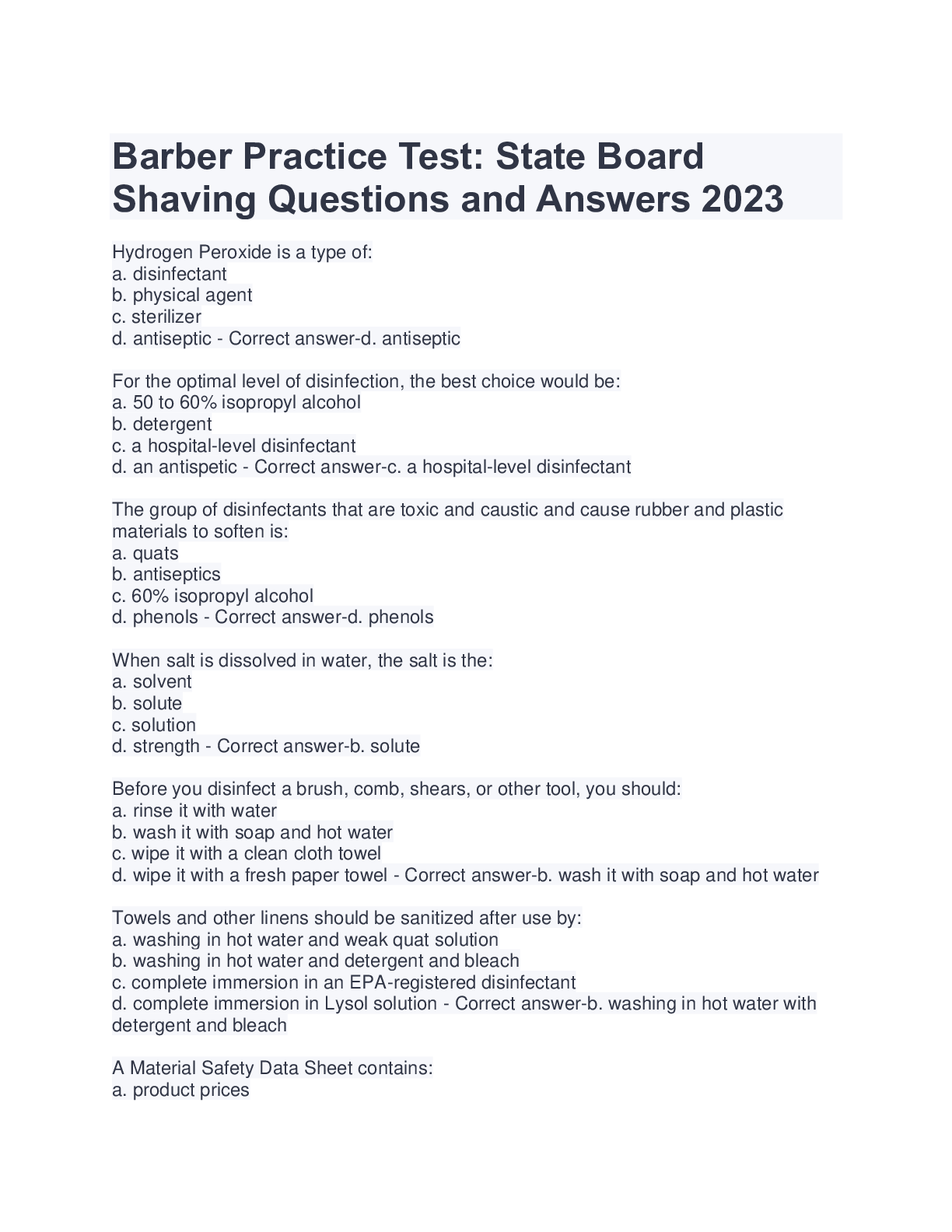
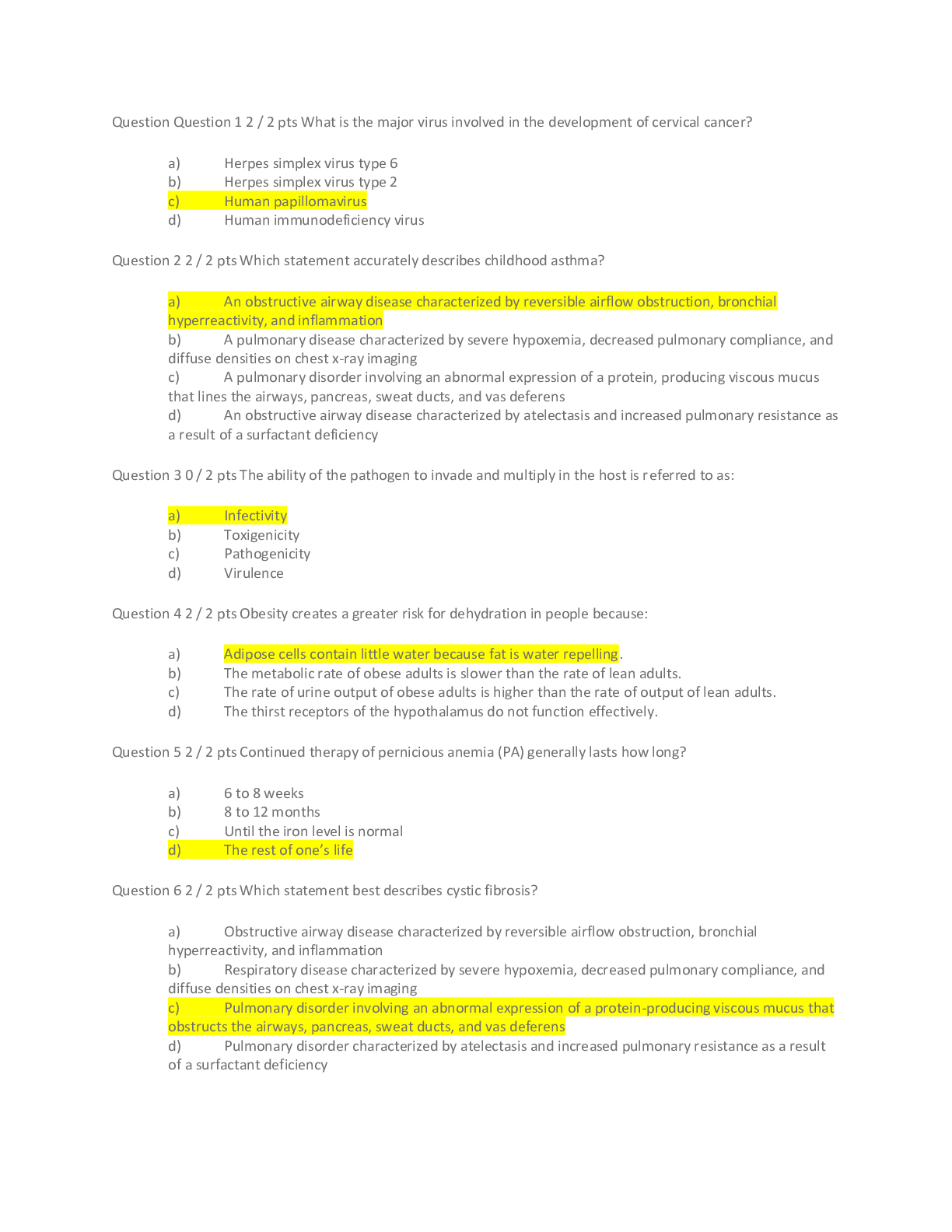




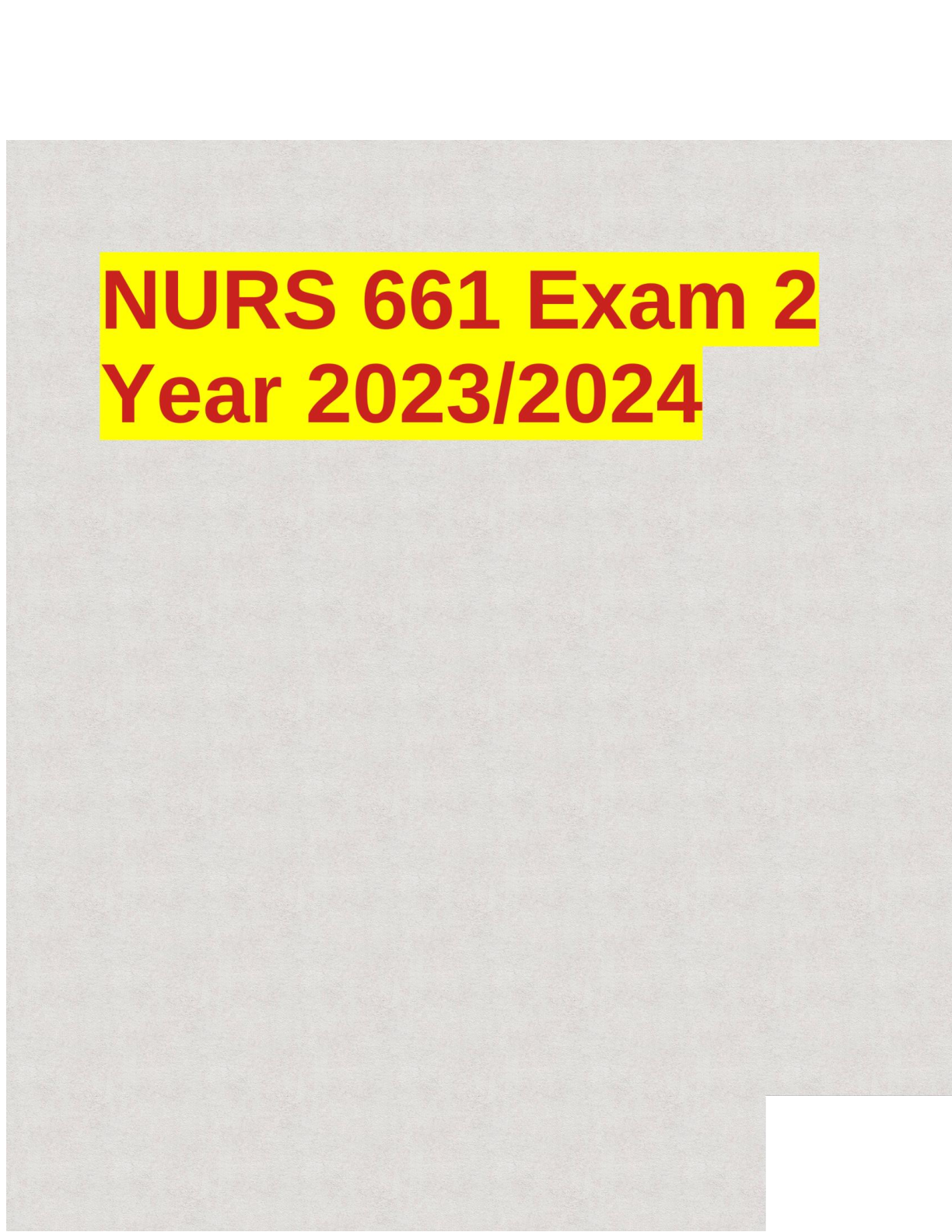

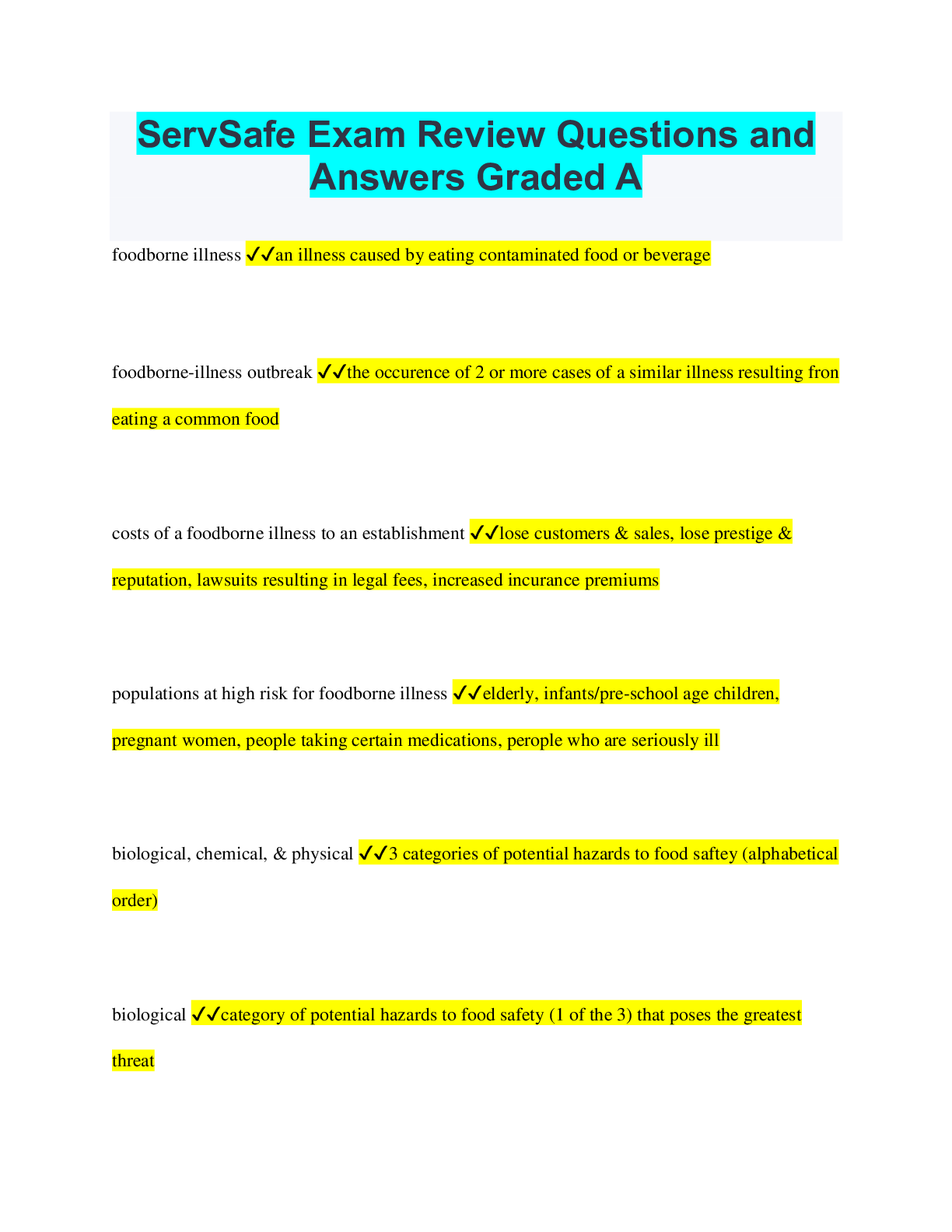


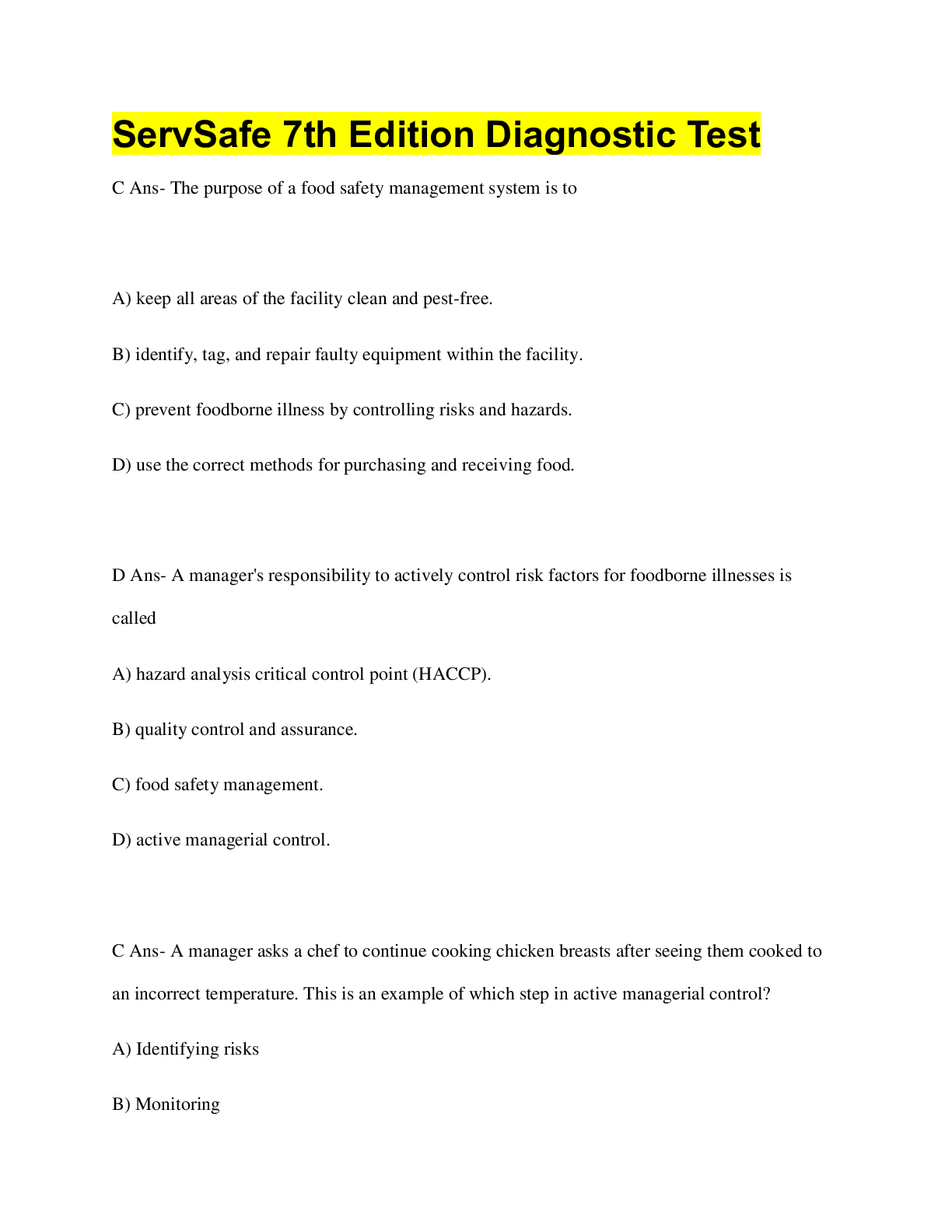
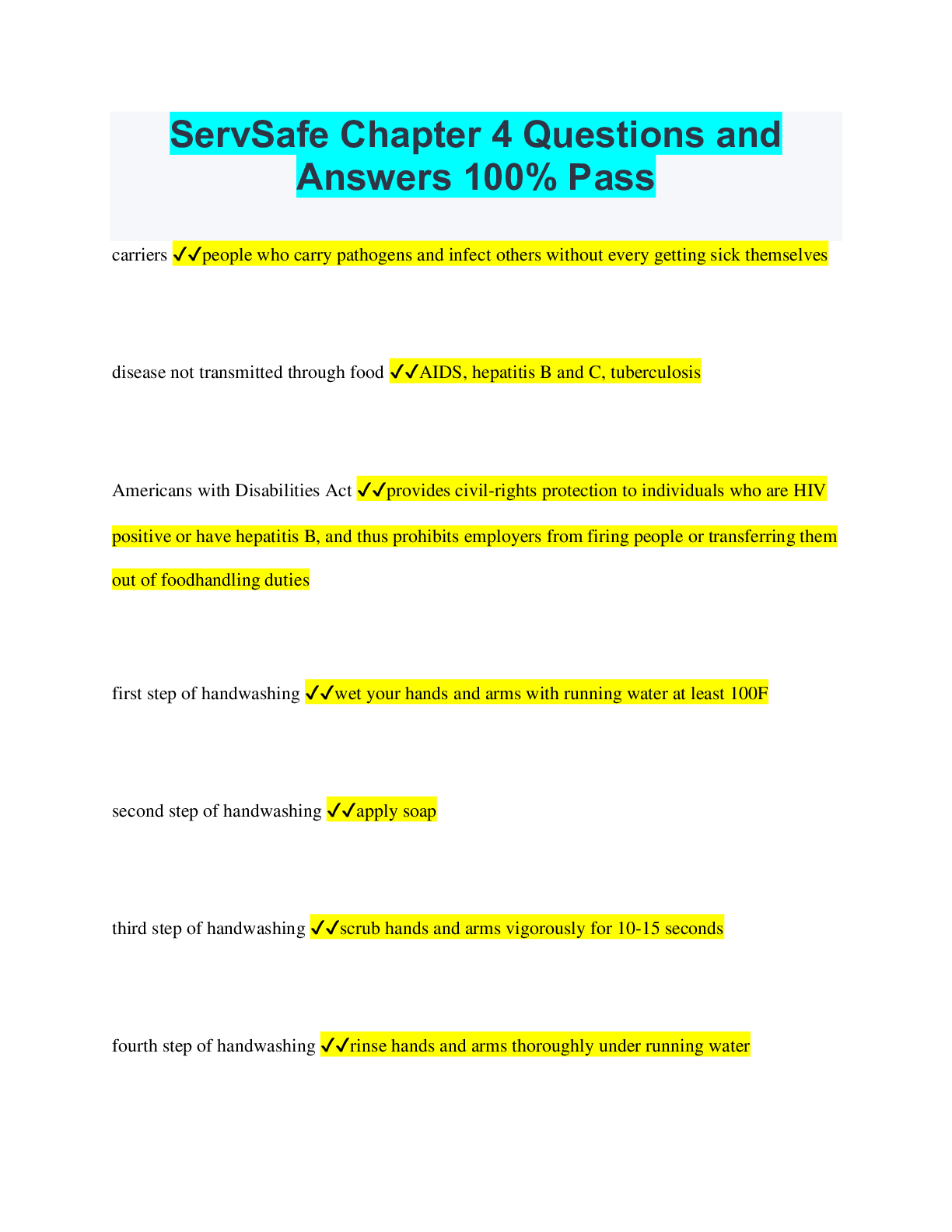
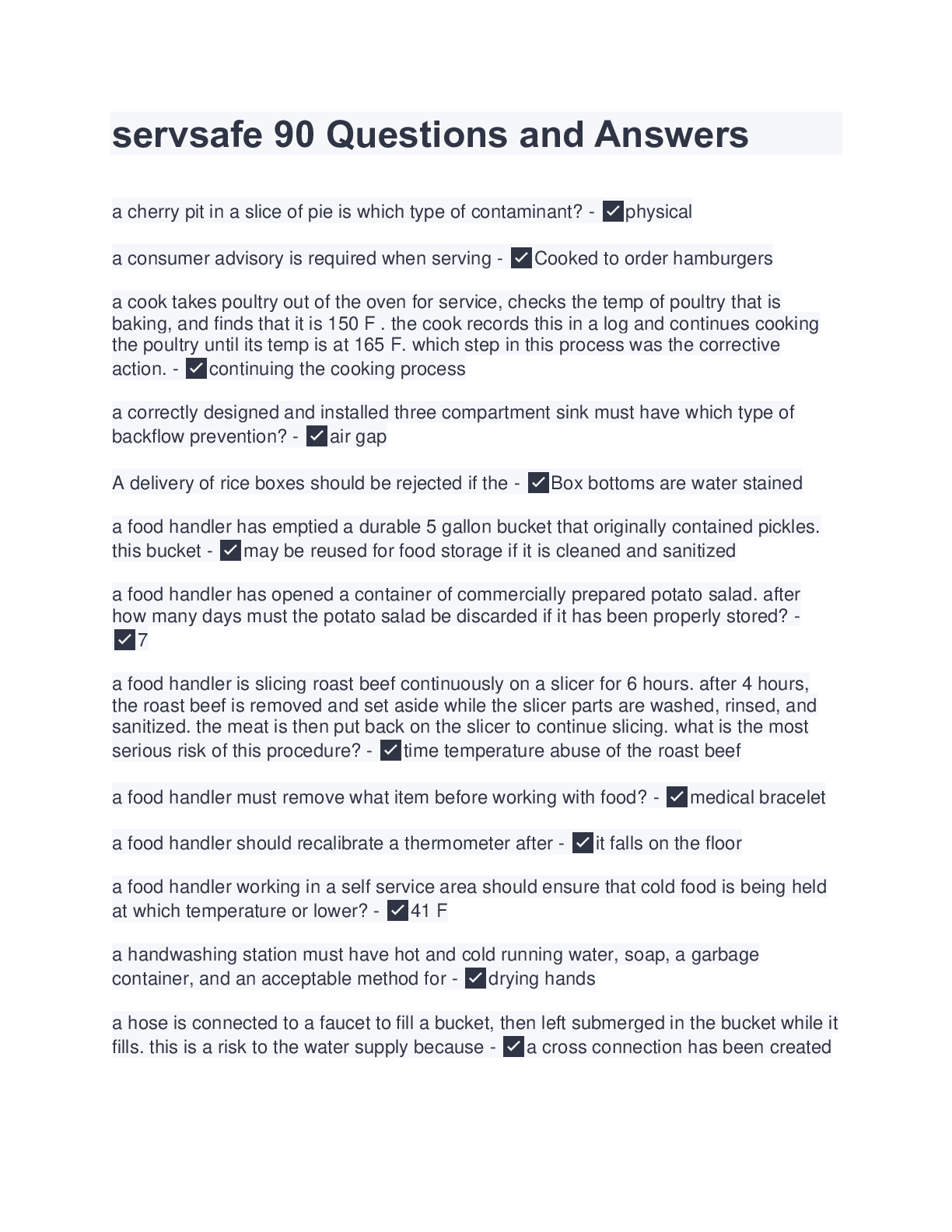
.png)
